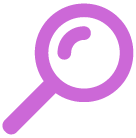UTL
 : Universal Tag Locator
: Universal Tag Locator
The Universal Tag Locator (UTL) is an all-encompassing process monitoring and reporting system with extensive search and reporting features. Its users can locate real-time instrument information from multiple data sources. UTL is expandable and customizable to connect with all of your plant’s current instrument data sources.
Your operators and supervisors can create customizable end-of-shift reports that can be emailed to selected individuals to manage job tasks and improve continuity. Operating targets can be identified and tracked against established benchmarks. Alarms can be monitored and managed to identify at-risk process conditions.

End of Shift Reports
The End of Shift Reports (EOSR) module allows an operator or supervisor to create, edit and publish end of shift reports using site-configured templates. The shift reporting software makes configuration easy and includes the ability to incorporate various data types and data from external sources (e.g., targets with current values, alarm data, IntelaTrac) or from other EOSRs (data rollup). EOSRs are managed using your plant's hierarchy so only the operators qualified to work a job can fill out the report for that job. Unlimited report types can be created depending on your site's needs.
Alarm Module
Unique in the industry, the UTL Alarm Module can retrieve raw event data from your site’s control system event database, journal collector or DCS log output. The UTL Alarm Module processes this alarm data to determine alarm durations, priorities, alarm counts, alarm rates, alarm locations, operator actions and alarm floods. The UTL Alarm Module offers a fully customizable set of reporting options to process this alarm data into user-specific reports.


Target Locator
The Target Locator, manages your operating/business planning targets and then provides target summaries using your live process data (PHD, PI, ODS, Lab System, etc.) to determine if you are running within your targets. These summary reports for tags, tanks and lab data can then be inserted into any EOSR report. The Target Locator also has an operator instructions module that passes shift/plant area specific instructions to the site through the UTL interface when creating an EOSR or via the Subscription Engine.
Subscription Engine
Individual users can subscribe to and receive any UTL report via email on a desired schedule including any End-Of-Shift Report when it is published. Plant distribution lists can also be created to distribute these reports to multiple individuals.


Tag Locator Results
The Tag Locator Results module provides a one-stop shop for plant instrumentation information. The Tag Locator Results module queries all configured plant instrumentation data sources displaying the relevant information on one screen. This report is useful for finding plant-wide instrumentation information as well as reconciling data from different sources. The Tag Locator Results module can be customized to collect live data from your process historians, alarm systems, targeting data, operator actions, IPF systems, document/procedure management systems and instrument indexes.
IntelaTrac Reporting Module
The IntelaTrac Reporting Module integrates the UTL with your IntelaTrac system to provide customizable reports for ad-hoc viewing, inclusion in End-Of-Shift Reports and distribution via the Subscription Engine. Reporting options include exceptions by base or job, rounds reports, incomplete rounds reports, asset status reports and out-of-service procedures.


Enhanced Alarm Manager / Lab Search
The Enhanced Alarm Manager integrates your alarm management system with the UTL to expand the search capabilities and lets you display alarm configuration information and operator alarm responses directly on the Tag Locator results screen.
The Lab Search lets you link your lab data to the UTL either by querying your lab data directly and displaying the sample results in the UTL, or by linking to your existing system giving your users quick and easy access to the lab data.
HARDWARE & SOFTWARE
The Universal Tag Locator runs on Microsoft Server software. The system requires Windows 2000 Server (or higher) with IIS and SMTP services installed, SQL Server 2000 (or higher) and the file system space to house the data historian and system support folders. This configuration can be hosted on one server or distributed across multiple interconnected network servers.
USER WORKSTATIONS
No special user workstation software or hardware is required for UTL. The IE 8.0 web browser (or later ) is required. UTL runs on all current browser software and handheld devices.
DATABASE SERVER
UTL requires Microsoft SQL Server 2000 or higher. The UTL database can run on the same machine as the application or on a remote machine. By having the SQL server on the same machine, the system does not have to rely on connections to a remote SQL server machine to run. But the load on the server may compromise the performance of the web server. If the server has enough memory and processor capacity, then this configuration should work well.
Placing the SQL server on a different machine or on multiple interconnected servers frees up more resources on the web server for the UTL application. However, response times may be slower due to the remote querying of the databases, and the overall reliability of the system would depend on the stability of the servers running SQL Server, the stability of the web server and the network stability. The UTL database generates approximately 2GB of data per year.
FILE SYSTEM DISK SPACE
The current instances of UTL require about 2GB of disk space per year to store the PDF outputs. The UTL can be configured to store the outputs locally on the server or send them to a network directory. The distribution option is configurable for each instance of the program. For a 5-year projection, a minimum of 10GB of disk space is required.
NETWORK REQUIREMENTS
The network bandwidth must be able to process the requests going to and coming from the web server. If the SQL servers are all remote, then every database driven request will need to query the data source and return its results for processing as quickly as possible. The network connection must have the capacity to handle the potential data load of 200-400 users per site.
FUNCTIONAL USER ACCOUNTS
UTL requires a functional user account that will be the “Run-As” user. This account will have full control of the code pages on the web server as well as access to the various input/output directories that will be required to run the program.
ADDITIONAL SOFTWARE REQUIREMENTS
UTL may require additional software to connect to the data sources:
ActivePDF – 3rd party PDF converter that generates outputs from the system in PDF format
PHD API – this allows for connections to PHD data sources
PI-SDK – this allows for connections to PI data sources
@aGlance/AGG – this allows for connections to InfoPlusX data sources
Oracle 9.i Client – this allows for connection to data stored on Oracle Servers (ACM, Sample Manager, LIMS)

